Keys and scales are the foundation on which all music is built. Having a firm grasp on how everything fits together will only help you to excel as a musician. Today, we will focus on F major chords, the theory on how they are built, and how you can start playing in this key right away!
F Major Chords
The F major chords are the chords that are built using the notes in the F major scale; F – G – A – Bb – C – D – E.
What are the chords in the key of F major?
The chords in the key of F major are:
- F (I)
- Gm (ii)
- Am (iii)
- Bb (IV)
- C (V)
- Dm (vi)
- Edim (vii°)
*diminished chords (dim, for short) are denoted by the degree symbol (ex: B° = Bdim) The formula for a diminished chord is I – bIII – bV.
What are the notes of the F Major scale?
The formula for finding the notes in the F major scale, or any minor scale, is:
| I (Tonic) | II (Supertonic) | III (Mediant) | IV (Subdominant) | V (Dominant) | VI (Submediant) | VII (Subtonic) |
| Whole | Whole | Half | Whole | Whole | Whole | Half |
| F | G | A | Bb | C | D | E |
Whole – Whole – Half – Whole – Whole – Whole – Half
So, looking at your keyboard:
- F to G is a whole step
- G to A is a whole step
- A to Bb is a half step
- Bb to C is a whole step
- C to D is a whole step
- D to E is a whole step
- E to F is a half step
Relative and Parallel Keys
Parallel keys share similar names and the exact same root note, or tonic. For instance, F major and F minor are relative keys. They difference between two relative keys are the III, VI, and VII notes.
If you are in a major key and looking for the parallel minor, you flatten the III, VI, and VII note. If you are in a minor key and looking for the parallel major, you would sharpen those same notes.
Let’s see how that looks when written out:
- F (I)
- G (II)
- A (III)
- Bb (IV)
- C (V)
- D (VI)
- E (VII)
If we flatten the III, VI, and VII to turn the key minor, it will look like this:
- F (I)
- G (II)
- Ab (bIII)
- Bb (IV)
- C (V)
- Db (bVI)
- Eb (bVII)
As easy as parallel keys are to figure out, relative keys are even easier. A relative key shares all of the same notes. The only difference between the two is the root note, or tonic.
The relative key to F major is D minor. They each share the same notes but with different starting positions. You can see how they are laid out below.
F Major
- F (I)
- G (II)
- A (III)
- Bb (IV)
- C (V)
- D (VI)
- E (VII)
D minor
- D (I)
- E (II)
- F (III)
- G (IV)
- A (V)
- Bb (VI)
- C (VII)
Parallel and relative keys are almost like cheating when it comes to memorizing your scales. Once you know one key, it is really easy to figure out the parallel key and the relative key.
Remember:
| Parallel Key means you either sharpen or flatten the III, VI, & VII notes but they share the same tonic. |
| Relative Key means they share the same notes but each have a different tonic. |
Now you just use those notes to build your chords.
How do I find F Major chords?
Building chords is pretty simple once you have the right formula. We build chords called triads. A major triad uses the I – III – V notes and a minor triad uses I – bIII – V.
You can see how each note corresponds to a specific Roman numeral in the chart below. We use those numerals in our formulas.
| I | II | III | IV | V | VI | VII |
| F | G | A | Bb | C | D | E |
So, using the two formulas above, we can build a F major chord with the notes:
- F (I)
- A (III)
- C (V)
To build chords using the F major scale you will only use these notes. The formula to figure out the chords is I – ii – iii – IV – V – vi – vii°.
So the chords of the key of F will look like:
| I | ii | iii | IV | V | vi | vii° |
| F | Gm | Am | Bb | C | Dm | Edim |
As you can see there are both major and minor chords in a major key. The reason that happens is because we can only use the notes available in the key to build our chord.
So, for instance, if we wanted an A chord, we would need the notes
- A (I)
- C# (III)
- E (V)
Since C# is not a note in the key of F major, we have to use the C note that is available. That C happens to be a bIII, which makes the A an Am chord instead.
F Major Chords (Diagrams)
You’ve waited long enough, here are some F major chord diagrams to get you started playing right away.
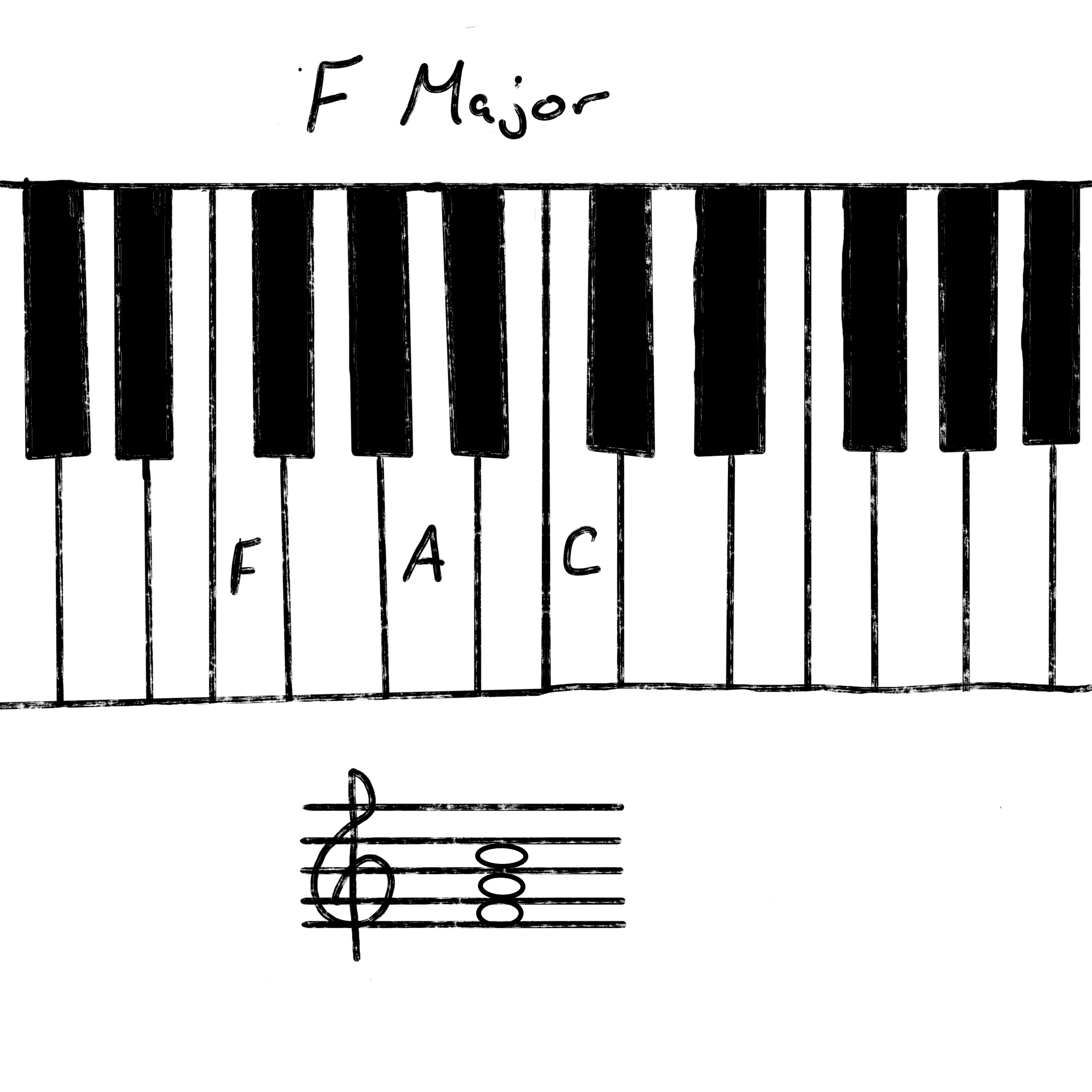
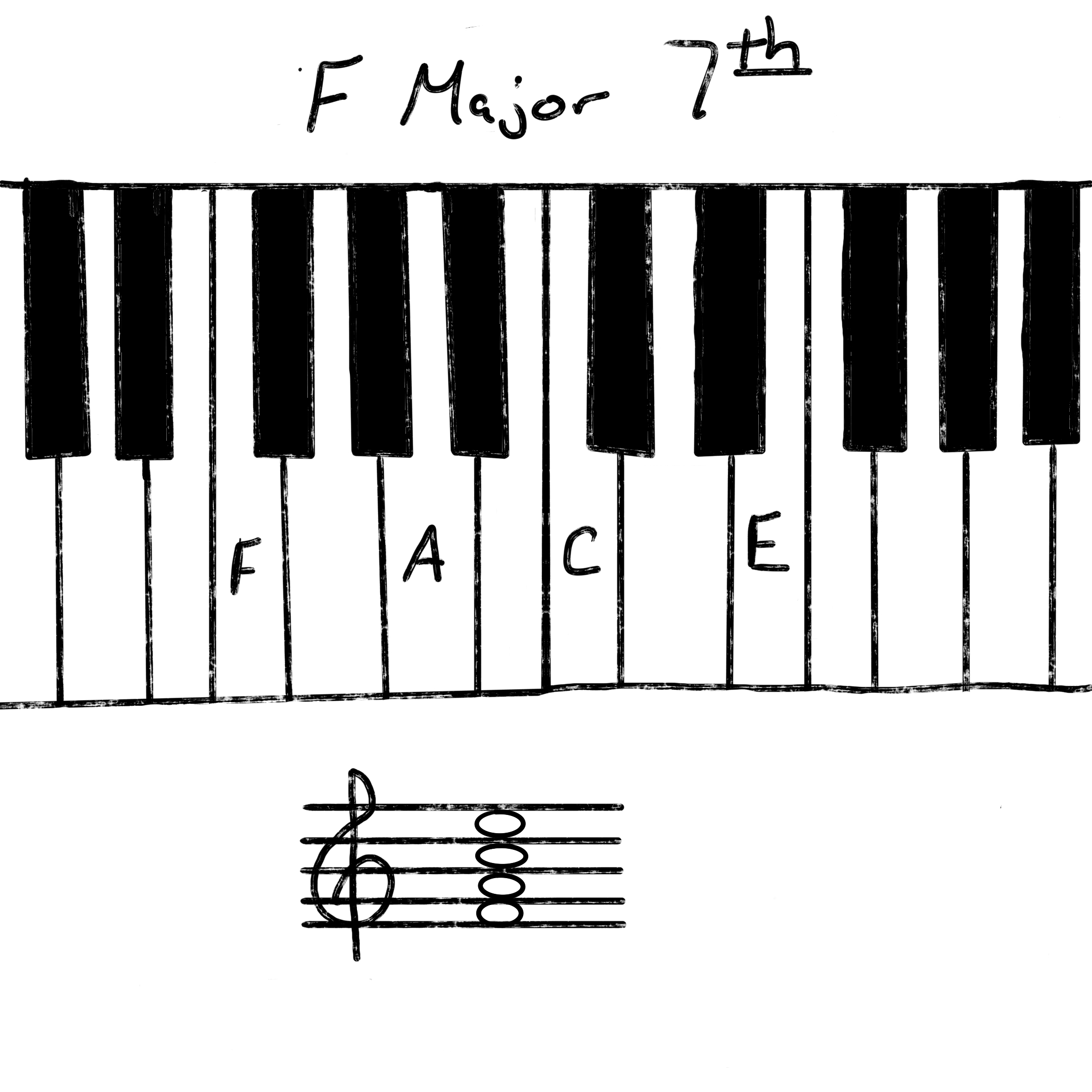
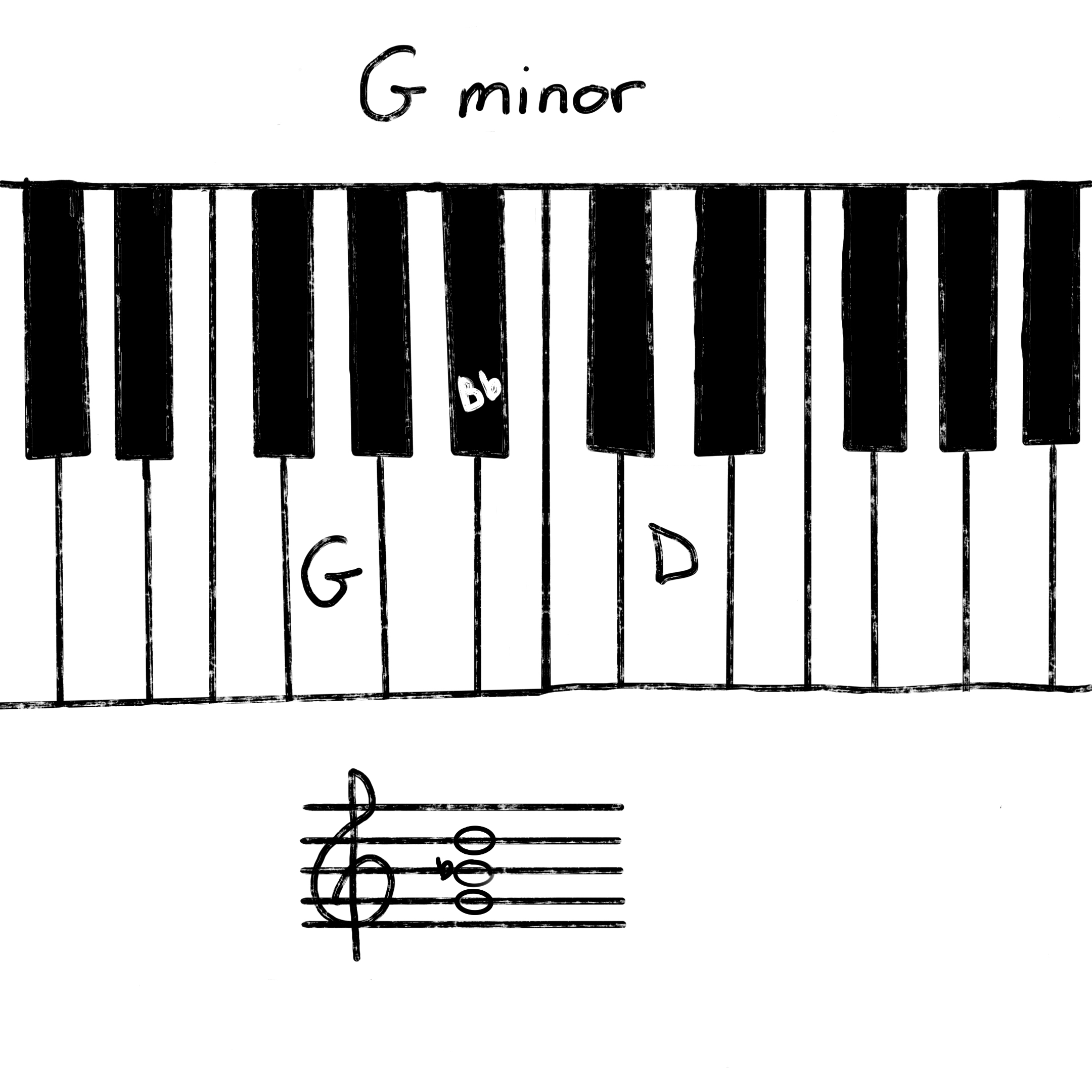
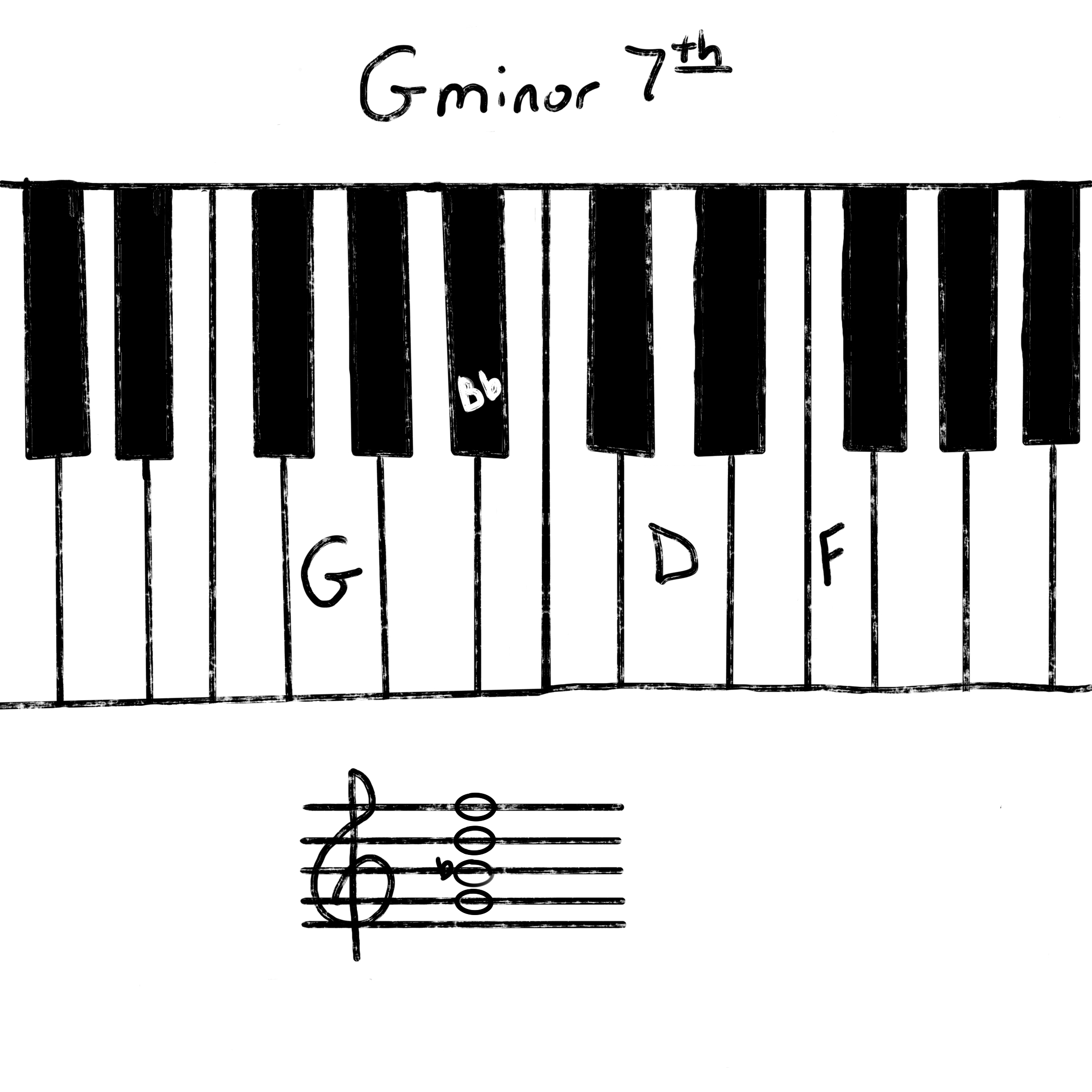
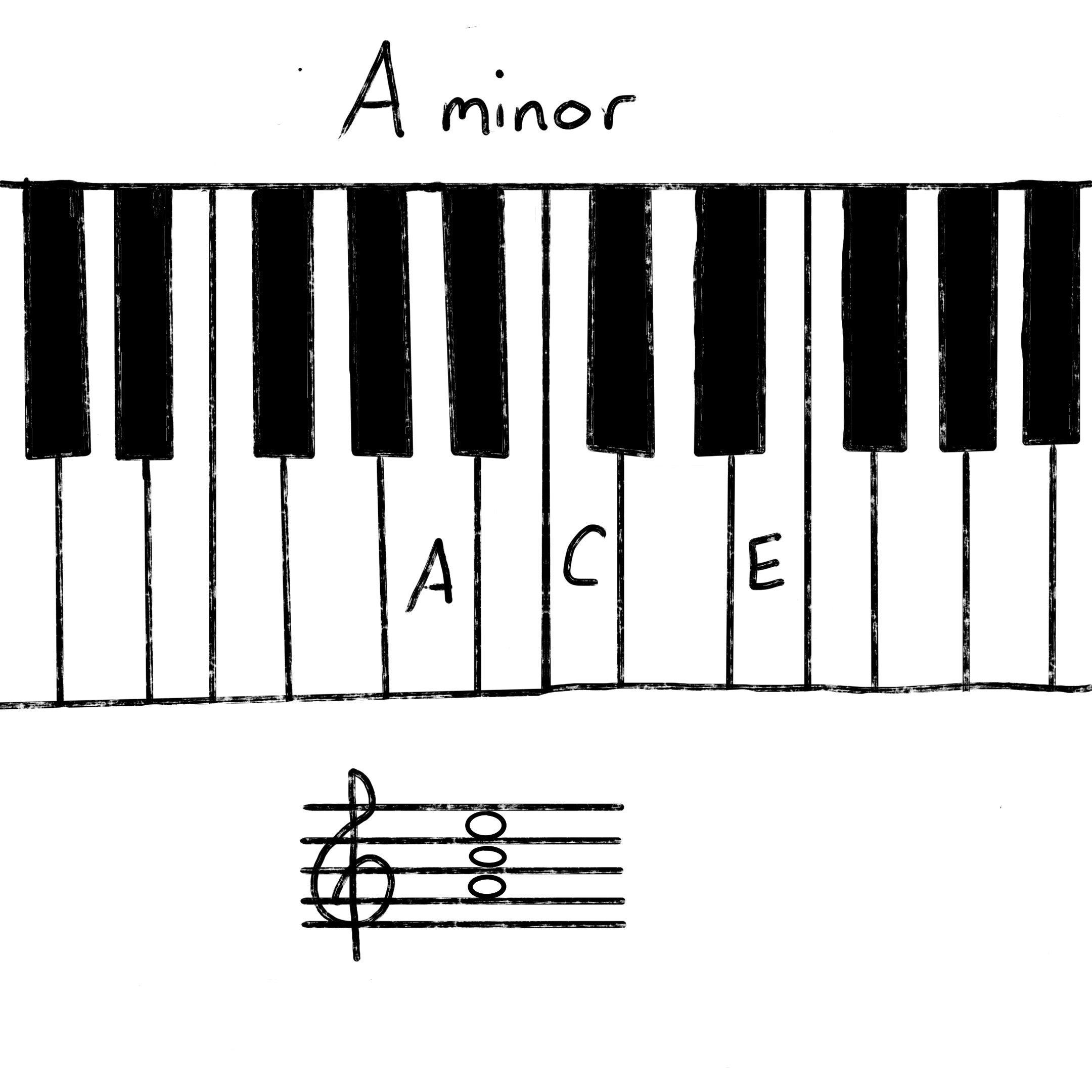
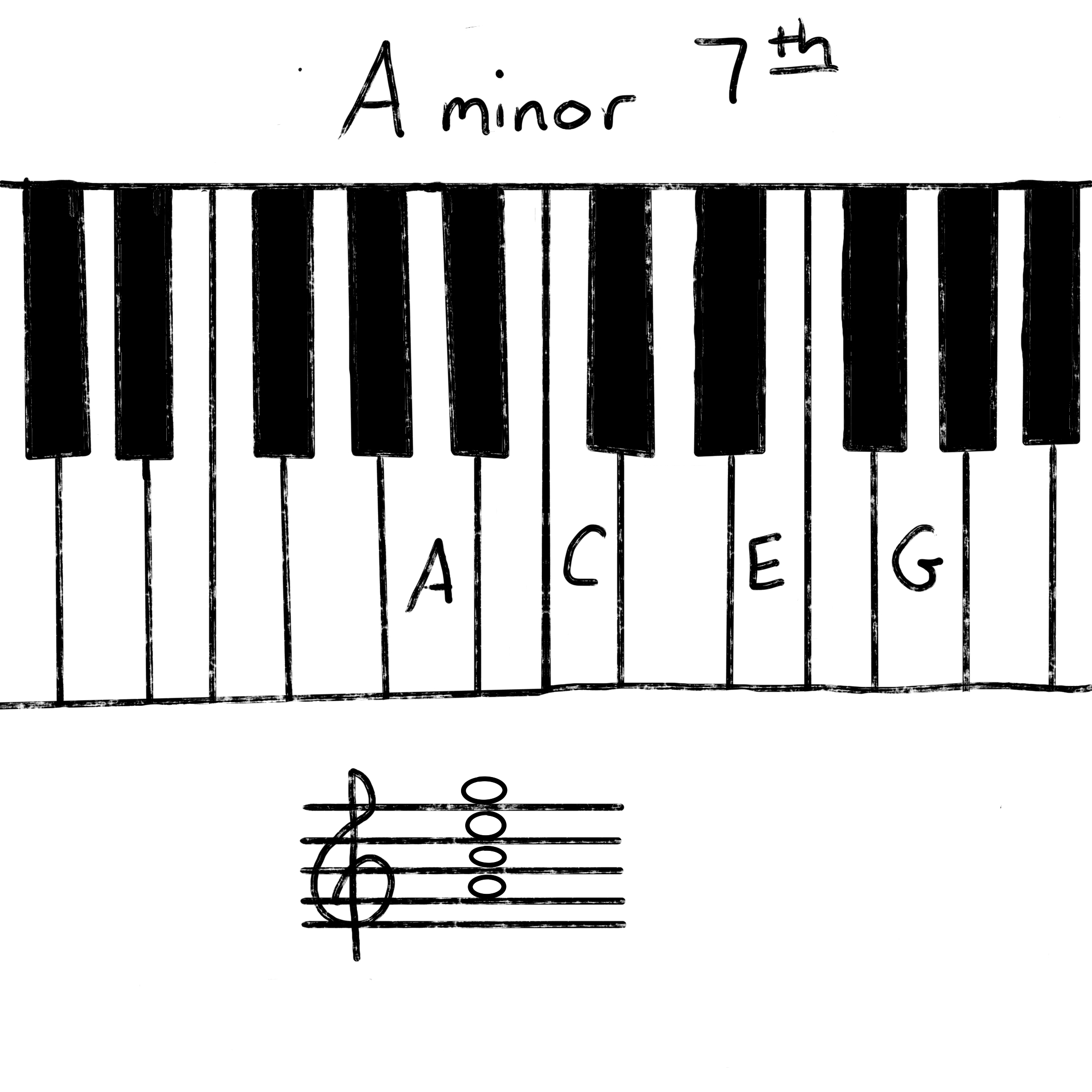
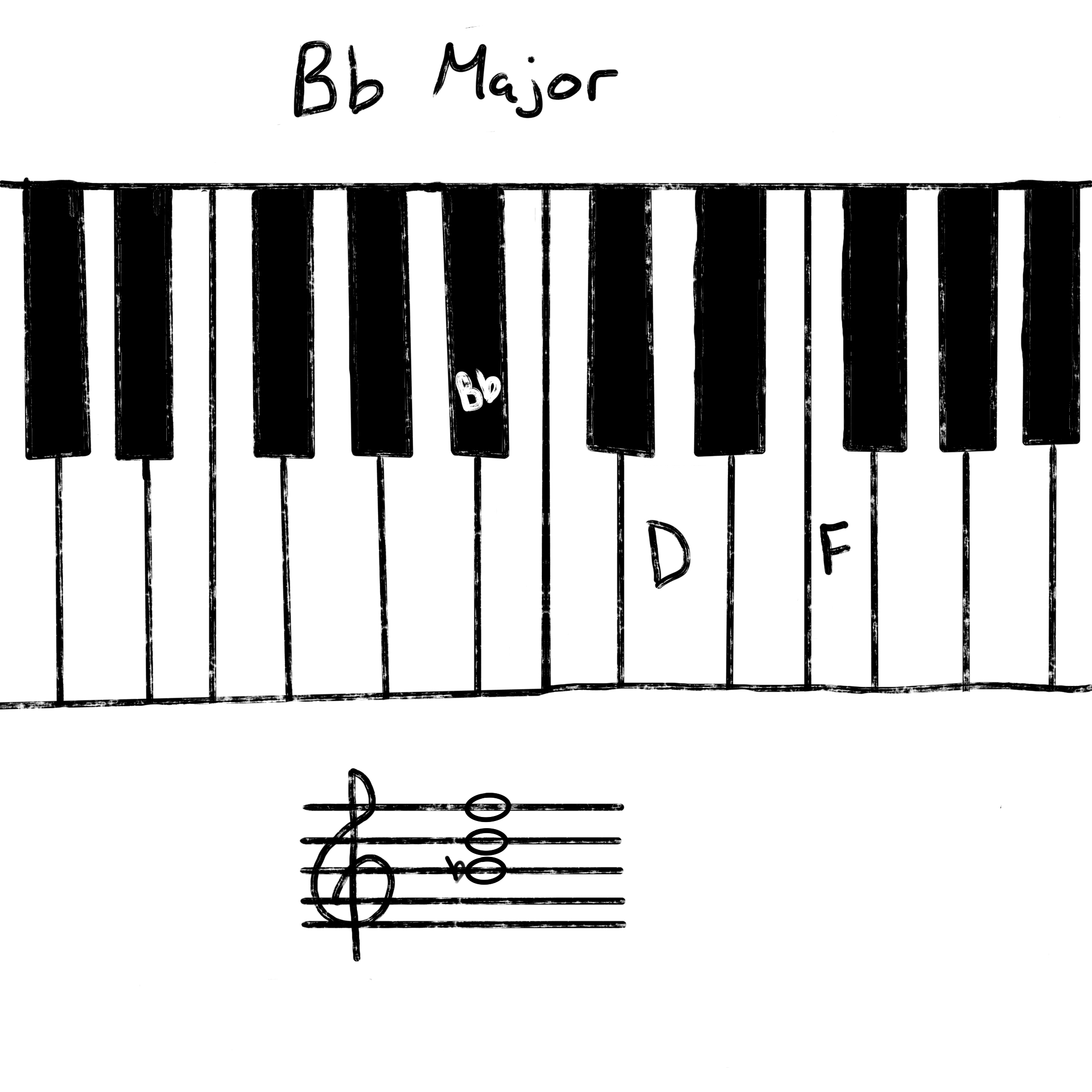
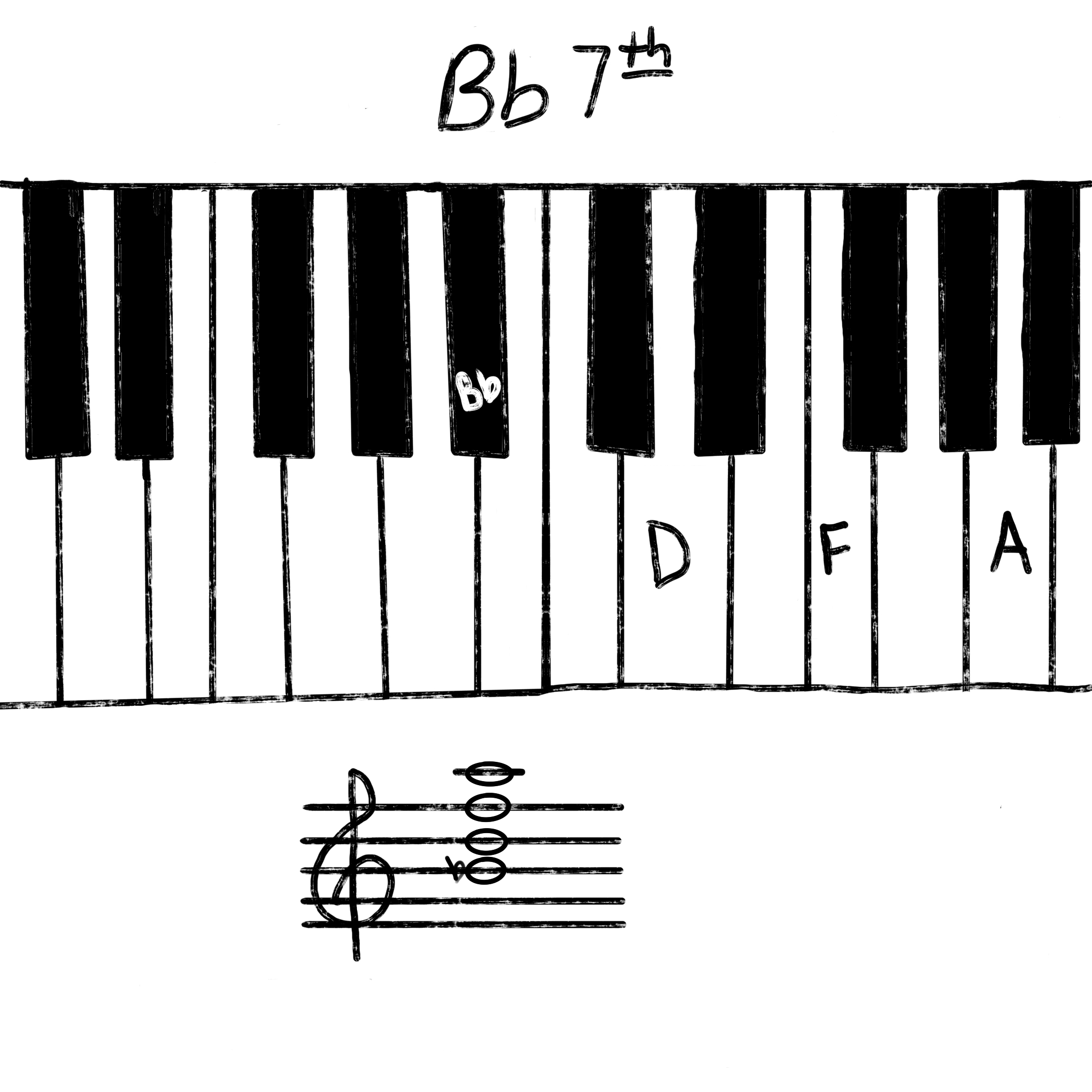
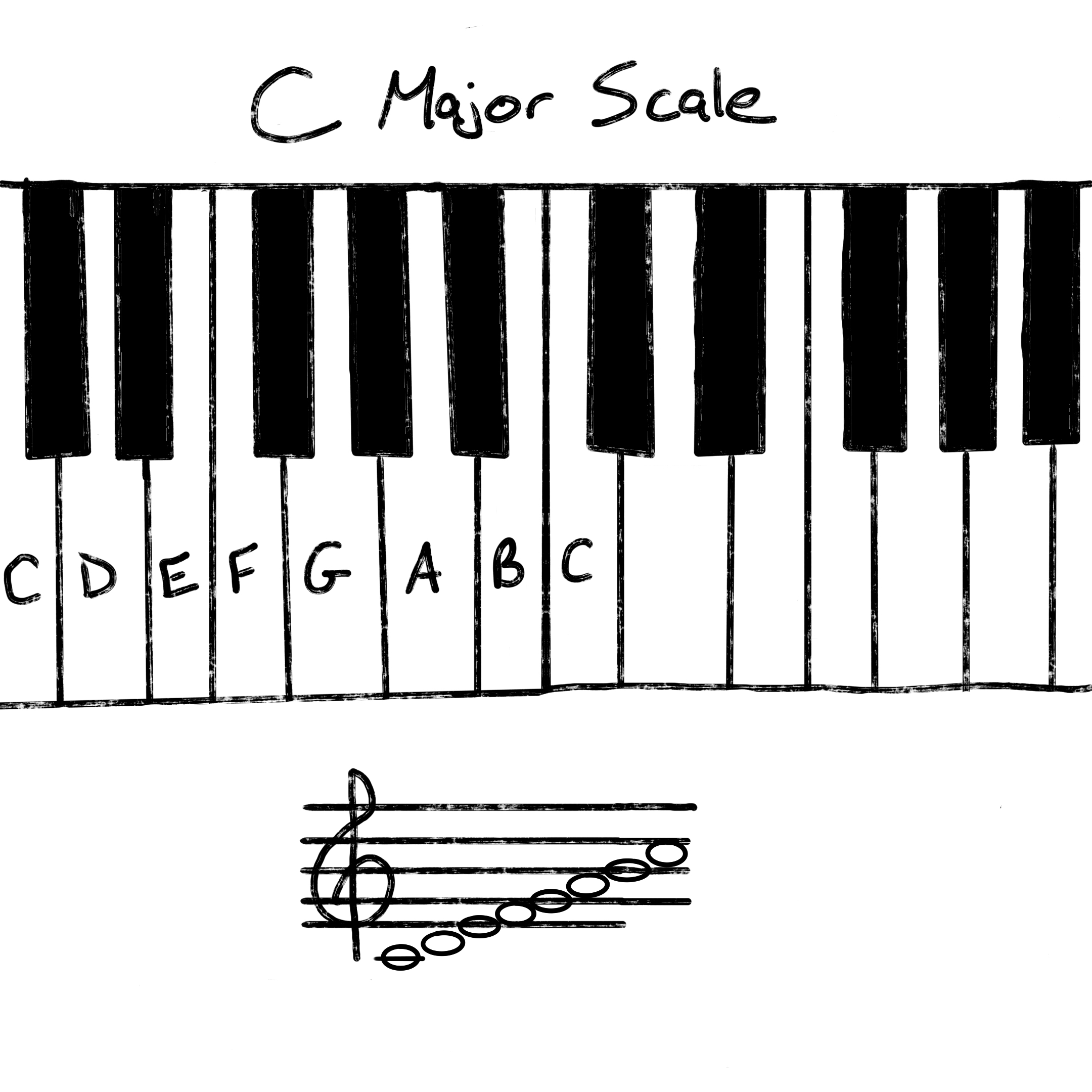
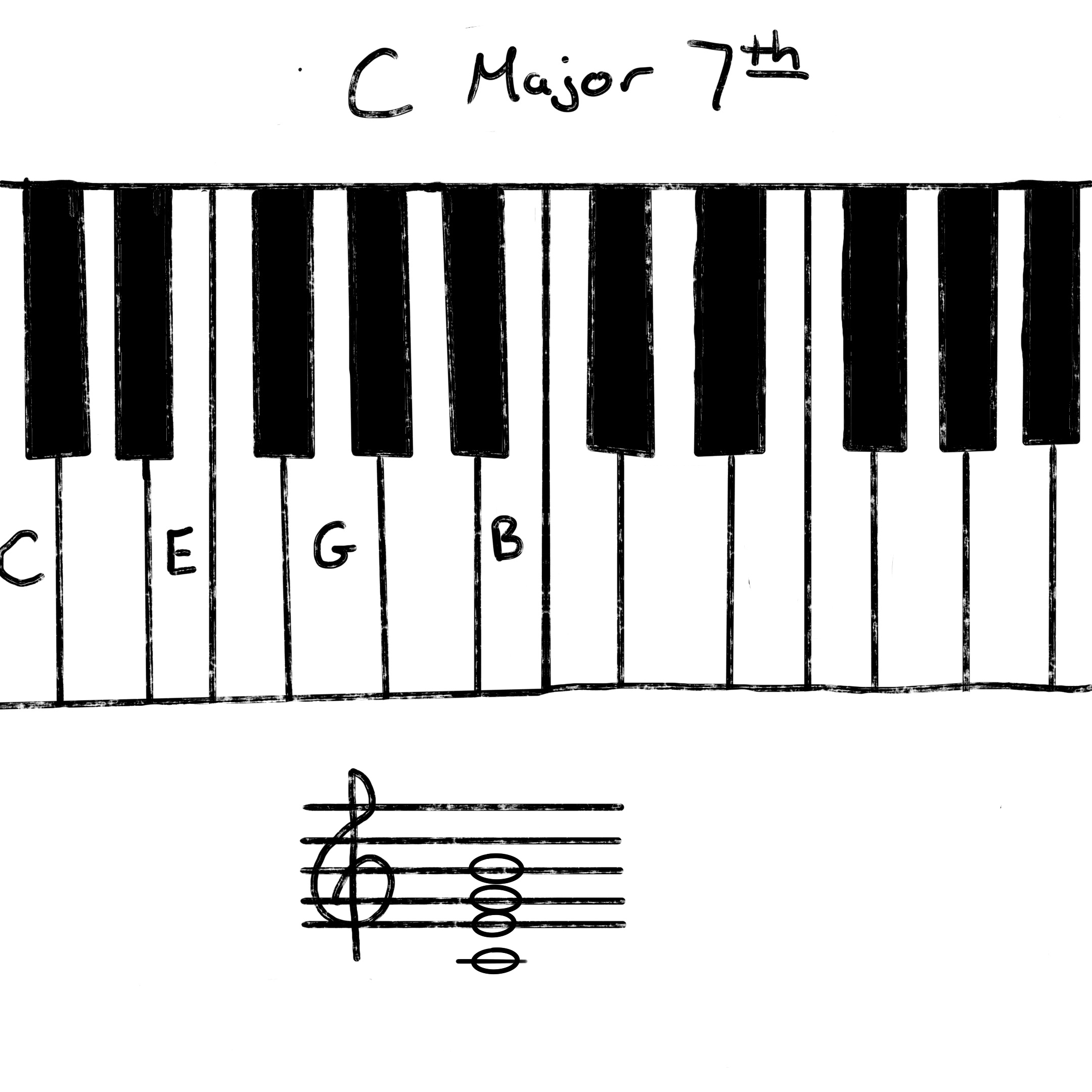
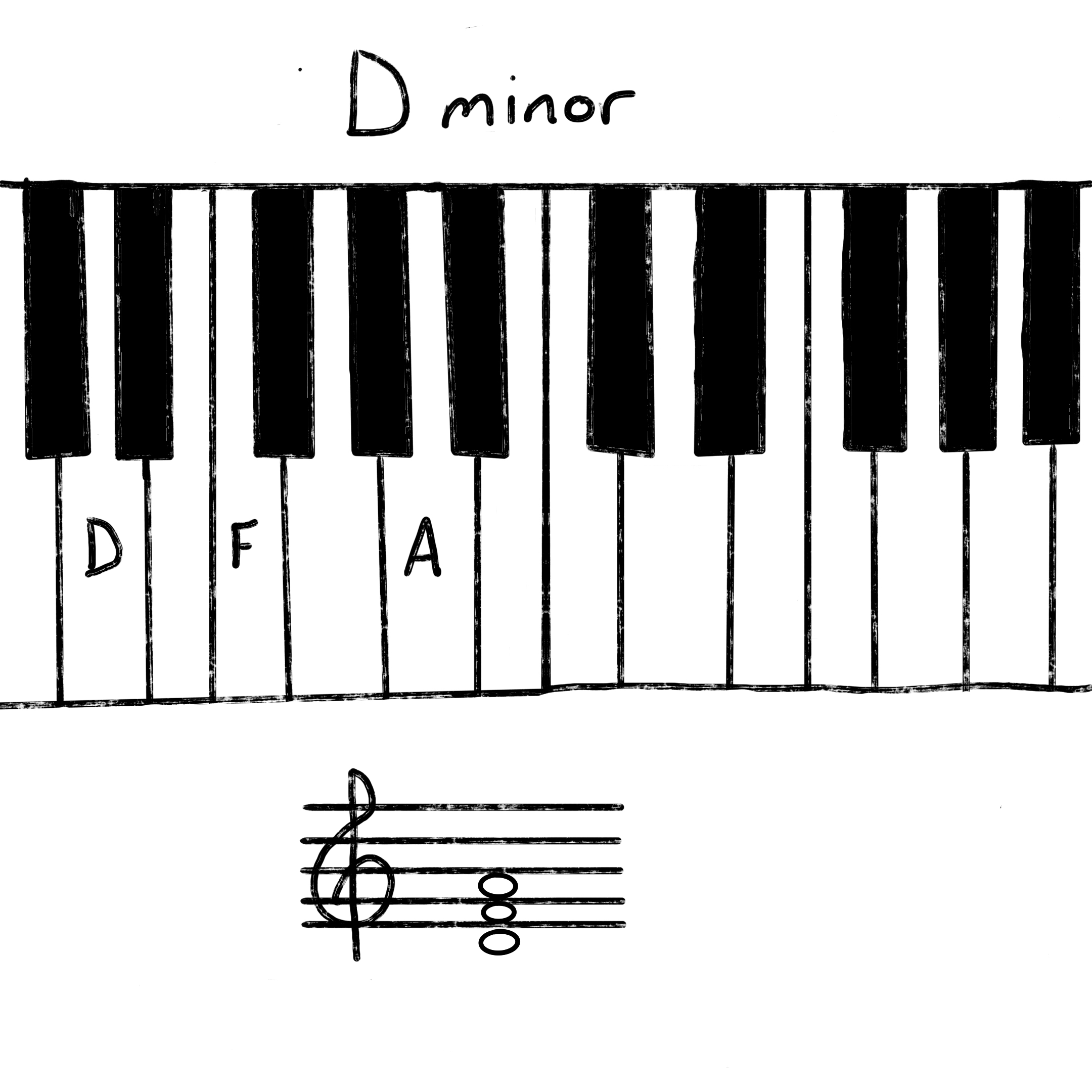
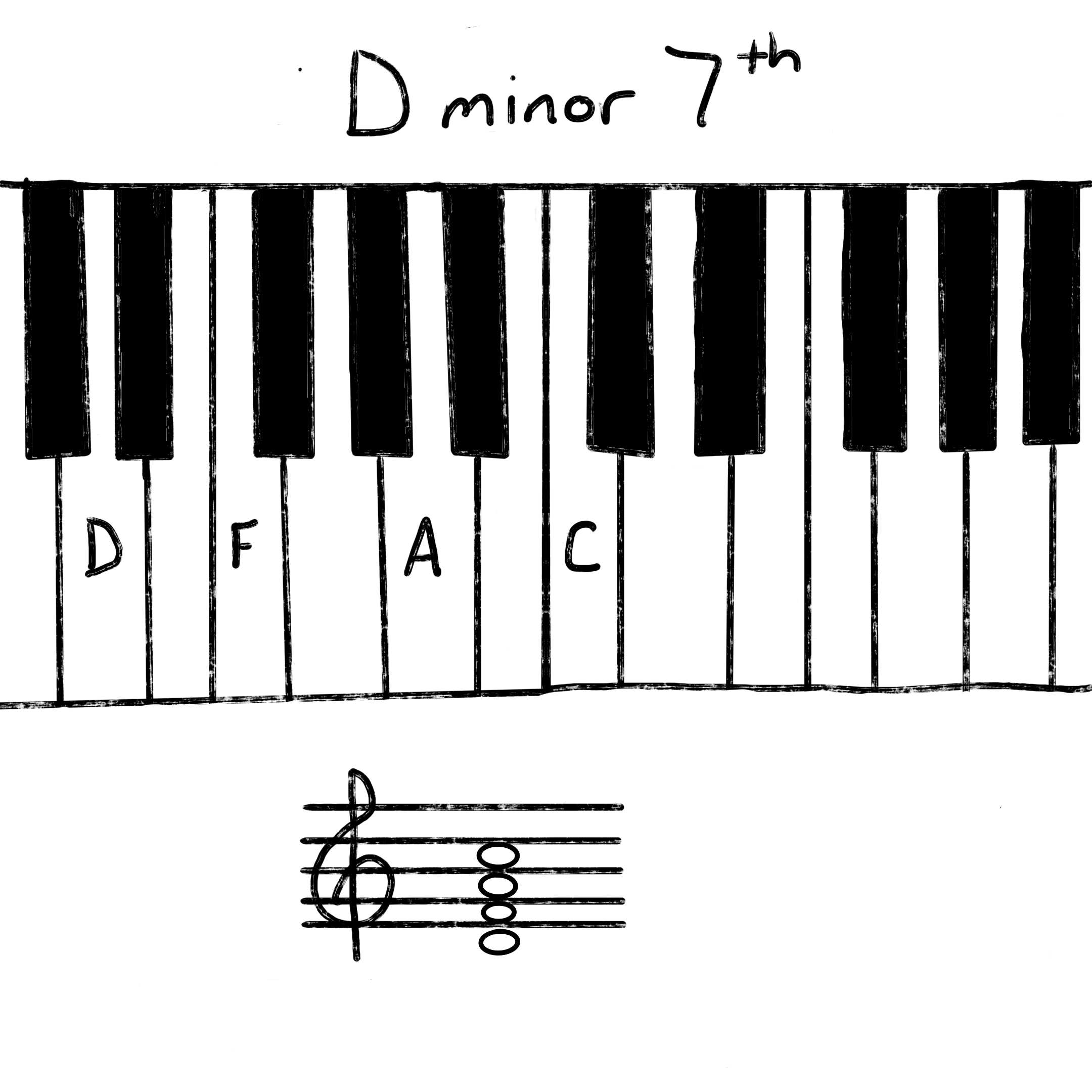
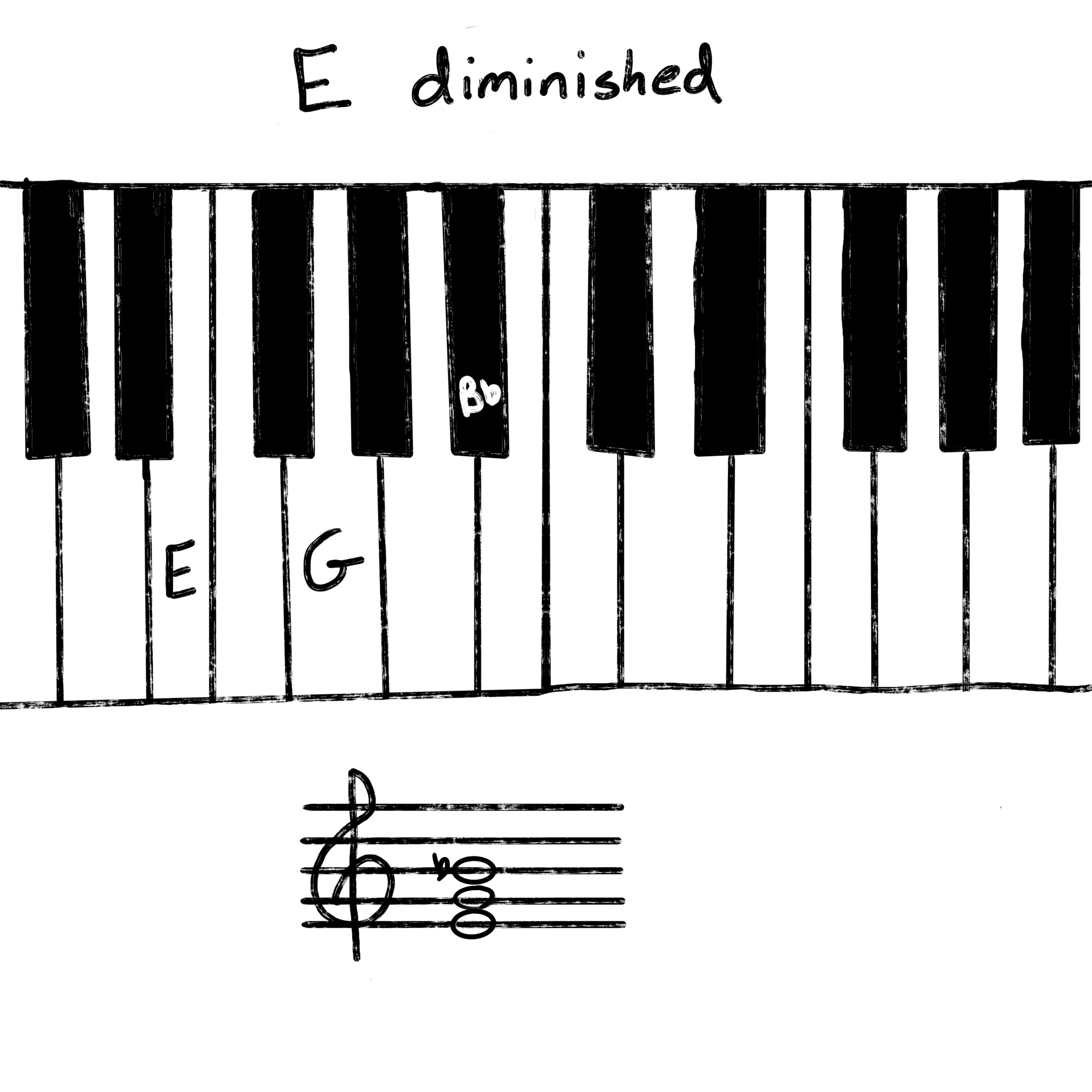
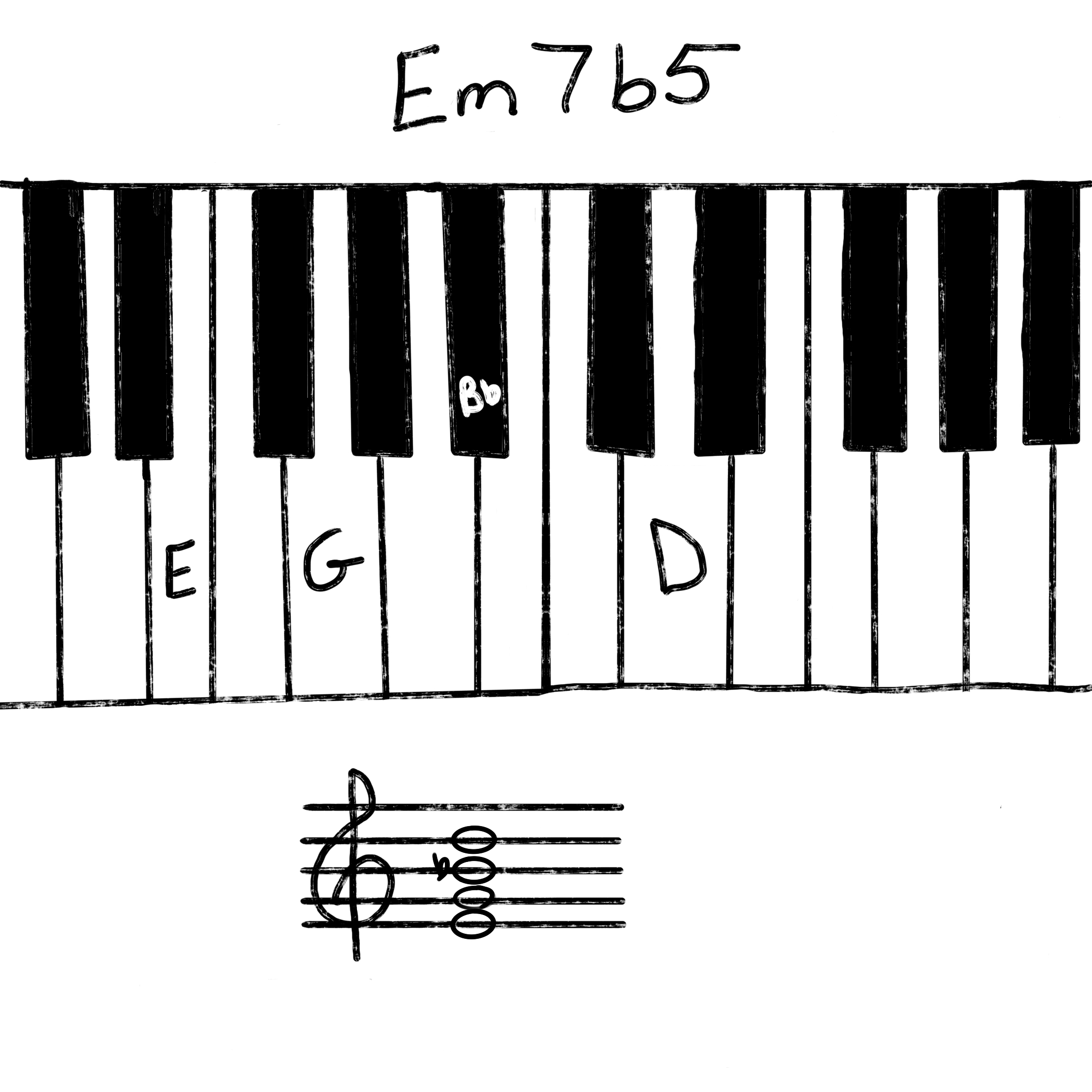
Inversions
Once you understand them, inversions are a really fun tool. To put them simply, they are just chords played with the notes in a different order. Let’s go into a little more detail.
To play an F major chord, we need the notes F – A – C. This is called the first inversion. If we wanted to play F major second inversion, we would play the notes A – C – F; with the F note being in the next highest octave. Finally, the third inversion would be C – F – A; with the F and the A both in the next highest octave.
This works anywhere you want on the piano. Inversions really help build muscle memory when needing to locate notes quickly.
| Inversion | 1st | 2nd | 3rd |
| Chord Formula | F – A – C | A – C – F | C – F – A |
First Inversion
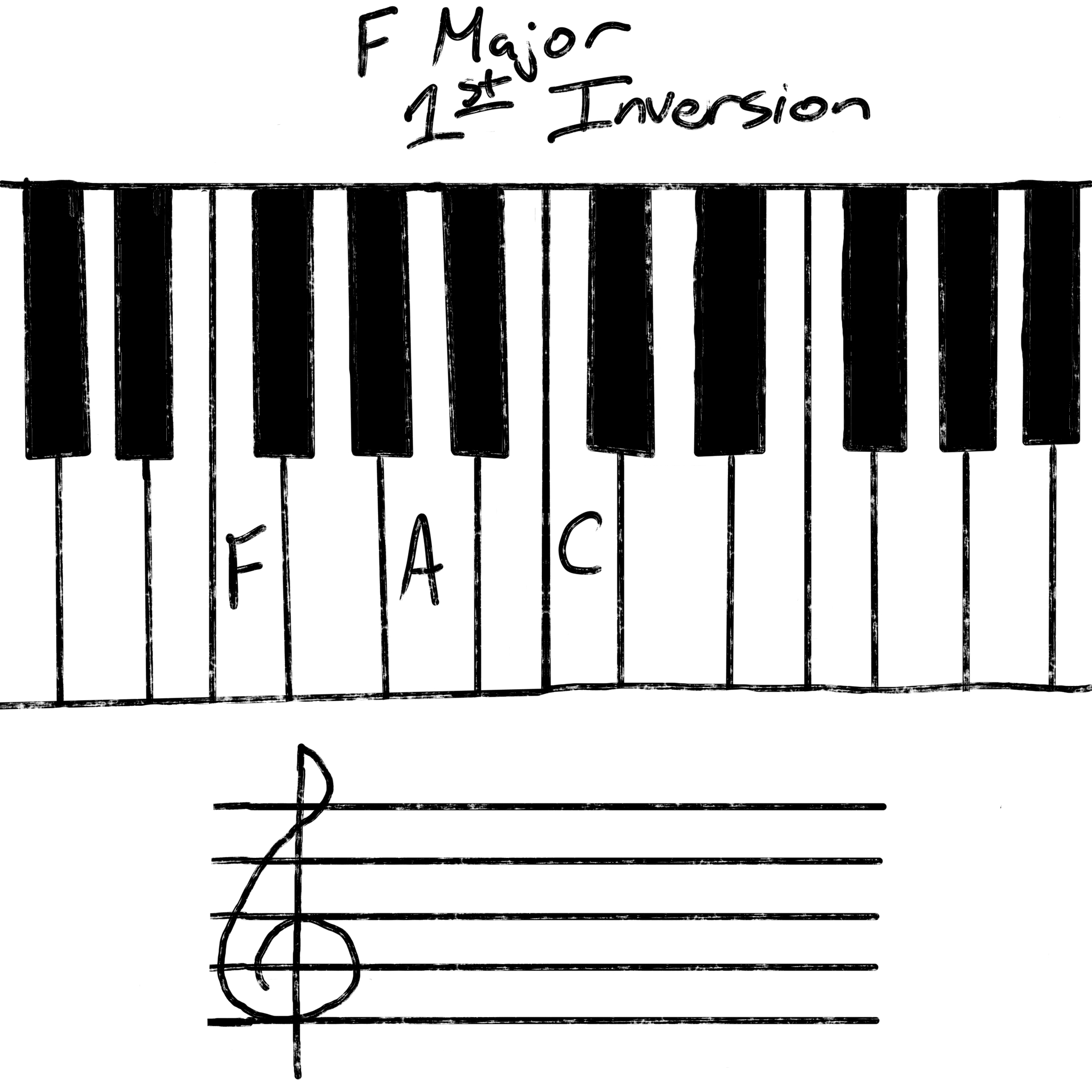
Second Inversion
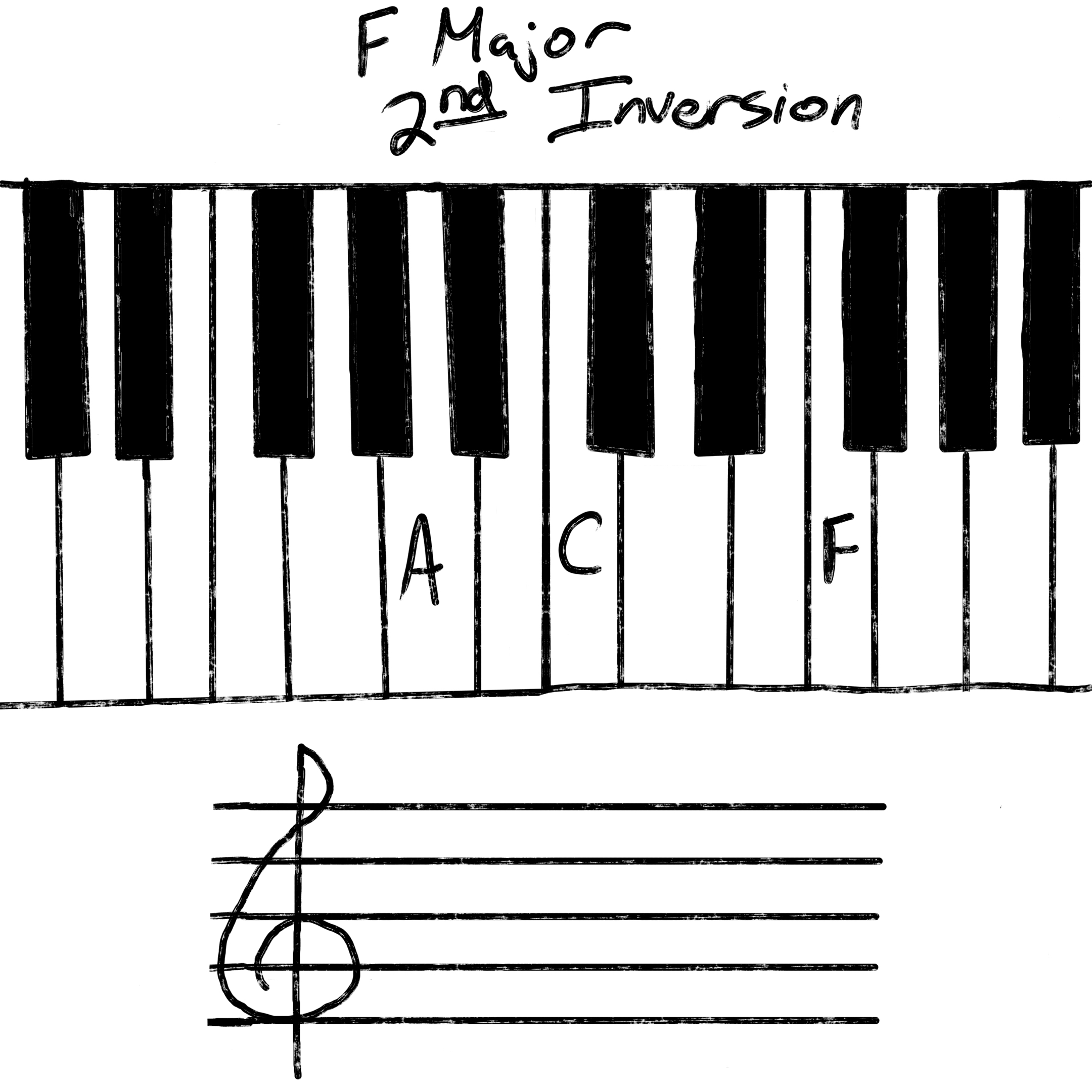
Third Inversion
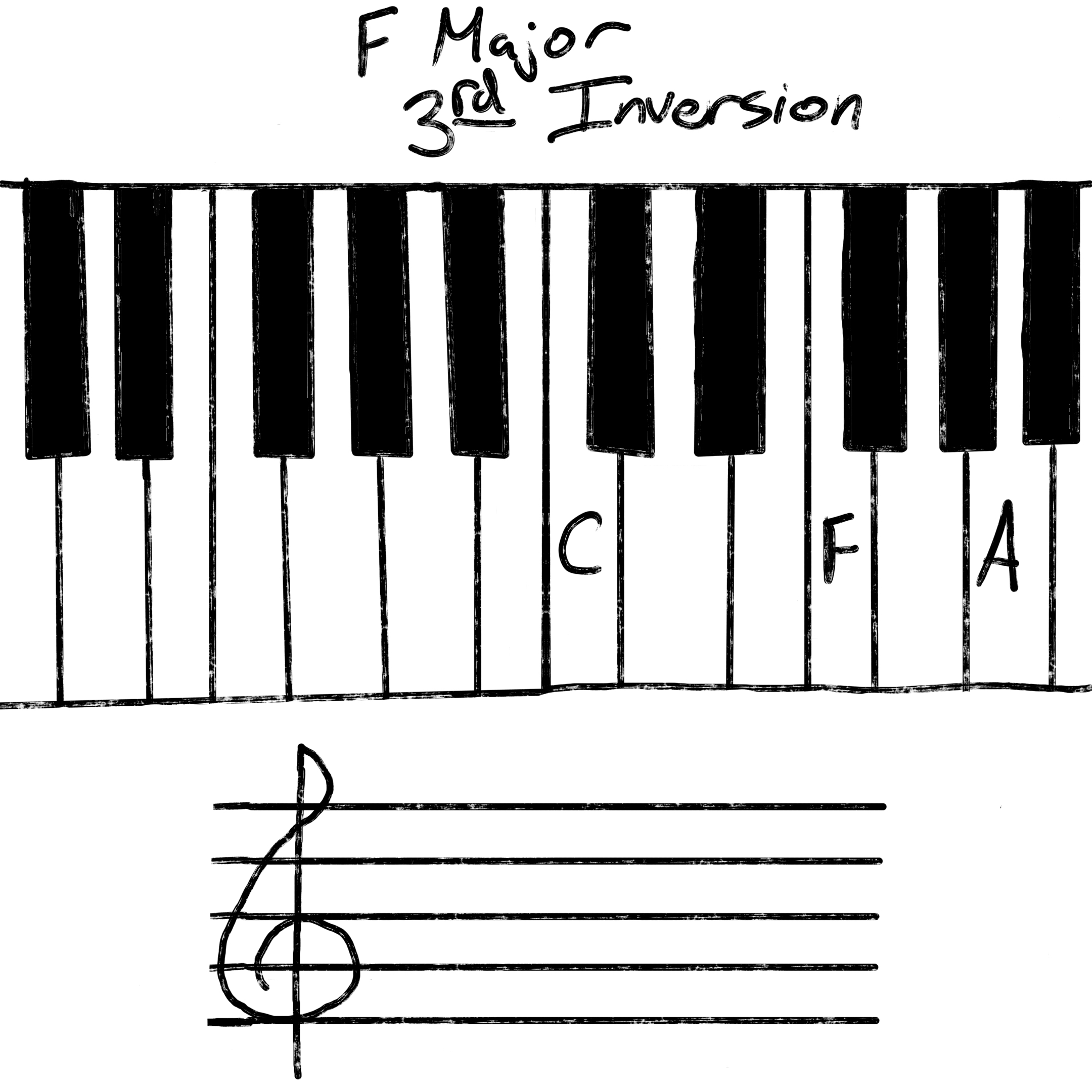
Modified Chords
A modified chord, for the purpose of this lesson, is simply a chord that has been altered from the original triad formula. You will often see these chords as either add chords or sus chords.
Prior to building these chords we need to assign numbers to our notes. This will become intuitive over time. Don’t worry about memorizing them right now.
This is similar to how we number them using Roman numerals above, we just keep going all the way up to 13. In the key of F, it looks like this:
- F = 1
- G = 2
- A = 3
- Bb = 4
- C = 5
- D = 6
- E = 7
- F = 8
- G = 9
- A = 10
- Bb = 11
- C = 12
- D = 13
We bolded the 2, 4, 7, 11, and 13 notes because they are the most commonly used notes in either add or sus chords.
Now, to build them, we will either add a note, as the name implies, or suspend, aka sus, a note and replace it with another one.
add Chords
You can easily build an add chord by picking the note you want and just sticking it in there. For example, if we want to play an Fadd2, we would take our F chord notes, F, A, and C, and add a II note. The new Fadd2 chord will look like F – G – A – C.
The same principle applies for all of the other numbers. You will notice that after the 7 note, they start repeating. Using the F example from above, let’s say we want to build an Fadd9 instead of an Fadd2 even though they both have a G note.
The difference in those chords, like with inversions, is the 9 G note is in the next highest octave. So the note order for Fadd9 would be F – A – C – G.
This works for all of the other duplicate notes as well; add4 and add11, add6 and add13. You won’t often see add6. However, when you do, it is often paired with a 9 and looks like this F6/9, F – A – C – D – G.
sus Chords
Suspended chords, or sus for short, require you to replace the III note with whichever note you want to suspend with. If we want to play an Fsus4, we would take the F major note, F – A – C, and instead play Fsus4; F – Bb – C.
The F Major Scale
If images help you learn a little more quickly, here is what the F major scale looks like on both a keyboard and a music staff.
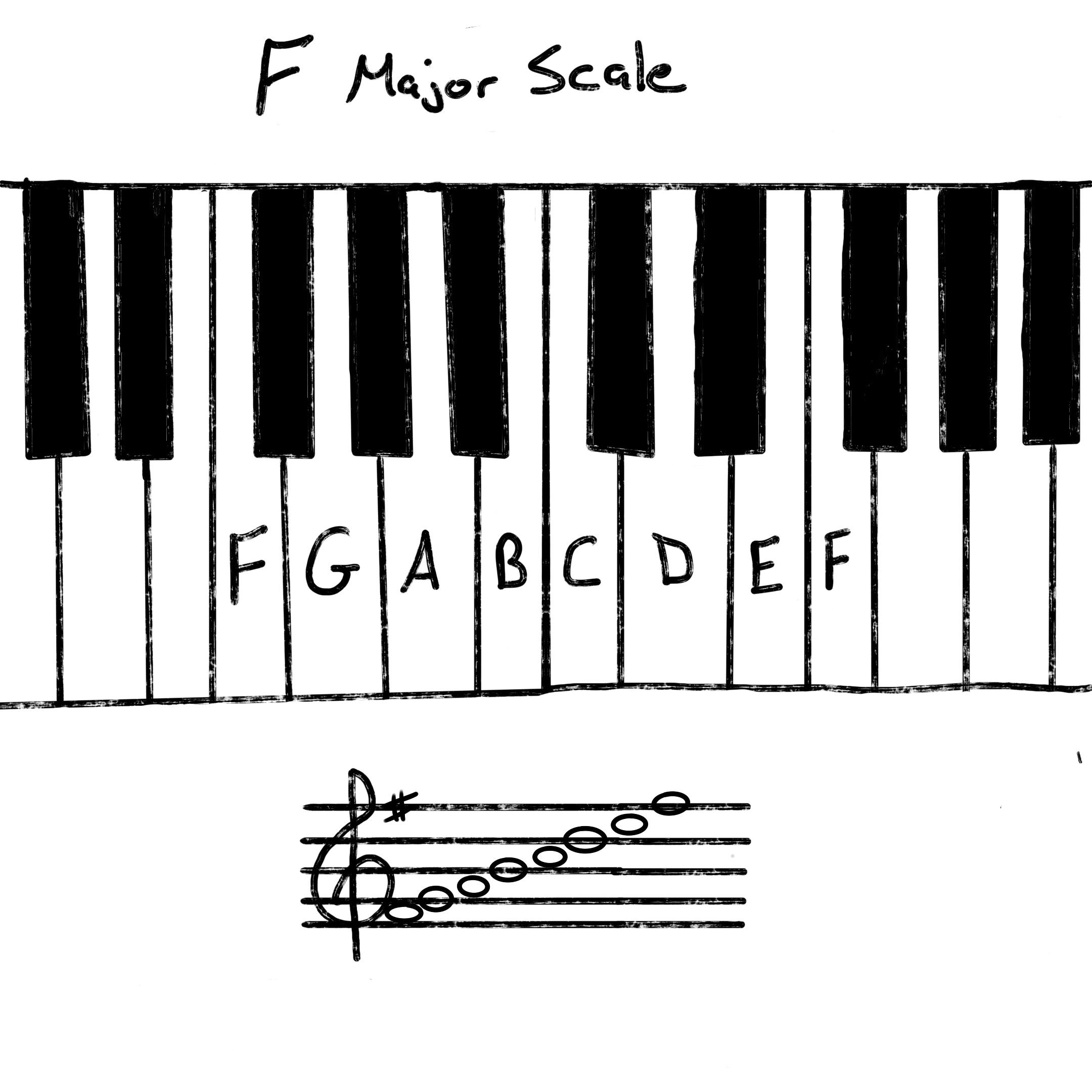
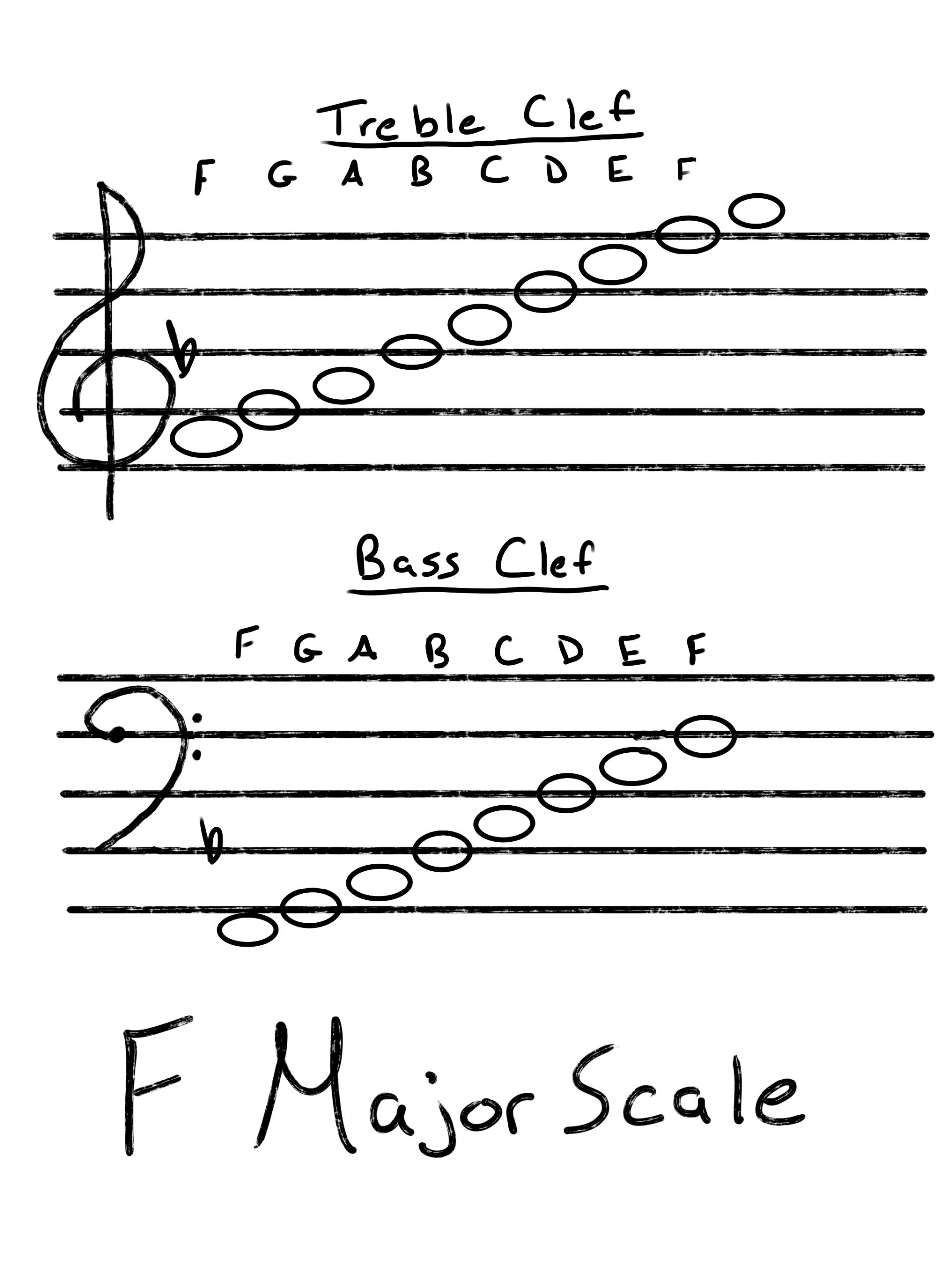
Songs In The Key Of F
You have the chords, now here’s a whole list of songs in the key of F major to get you started playing!
- Bed of Roses by Bon Jovi
- Starman by David Bowie
- Glycerine by Bush
- The Scientist by Coldplay
- Wichita Lineman by Glen Campbell
- One More Time by Daft Punk
- Torn by Natalie Imbruglia
- The Wind Cries Mary by The Jimi Hendrix Experience
- That’s the Way Love Goes by Janet Jackson
- I Just Can’t Stop Loving You by Michael Jackson
- Canned Heat by Jamiroquai
- Complicated by Avril Lavigne
- When the Levee Breaks by Led Zeppelin
- Wherever I May Roam by Metallica
- Home Sweet Home by Mötley Crüe
- Don’t Know Why by Norah Jones
- Self Esteem by The Offspring
- Blowin’ in the Wind by Peter, Paul & Mary
- Free Fallin’ by Tom Petty
- Wildflowers by Tom Petty
- The Great Gig in the Sky by Pink Floyd
- Debaser by Pixies
- Radio Ga Ga by Queen
- No Surprises by Radiohead
- Paranoid Android by Radiohead
- Bulls on Parade by Rage Against the Machine
- Aeroplane by Red Hot Chili Peppers
- Start Me Up by The Rolling Stones
- You Can Call Me Al by Paul Simon
- Is This It by The Strokes
- O Holy Night by Trans‐Siberian Orchestra
- Right Now by Van Halen
- Careless Whisper by Wham!
Wrap Up!
You are setting up a solid foundation of music theory knowledge and chord playing ability. Get back to practicing these new F major chords and use the theory from this lesson to build your own.
Until next time!